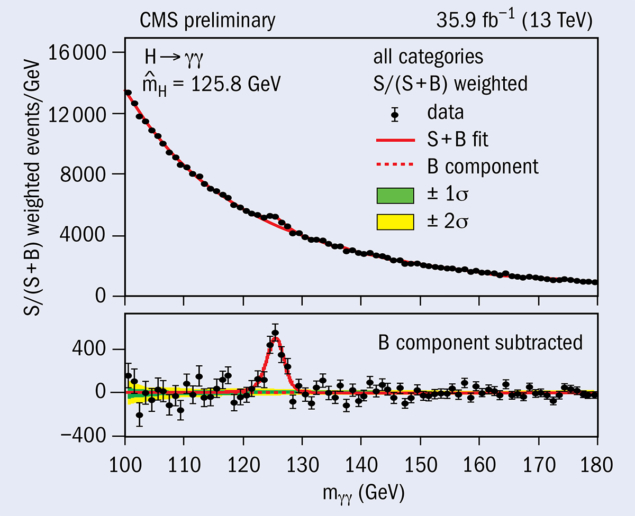A report from the CMS experiment

Though a free parameter in the Standard Model, the mass of the Higgs boson is important for both theoretical and experimental reasons. Most peculiarly from a theoretical standpoint, our current knowledge of the masses of the Higgs boson and the top quark imply that the quartic coupling of the Higgs vanishes and becomes negative tantalisingly close to, but just before, the Planck scale. There is no established reason for the Standard Model to perch near to this boundary. The implication is that the vacuum is almost but not quite stable, and that on a timescale substantially longer than the age of the universe, some point in space will tunnel to a lower energy state and a bubble of true vacuum will expand to fill the universe. Meanwhile, from an experimental perspective, it is important to continually improve measurements so that uncertainty on the mass of the Higgs boson eventually rivals the value of its width. At that point, measuring the Higgs-boson mass can provide an independent method to determine the Higgs-boson width. The Higgs-boson width is sensitive to the existence of possible undiscovered particles and is expected to be a few MeV according to the Standard Model.
The CMS collaboration recently announced the most precise measurement of the Higgs-boson mass achieved thus far, at 125.35 ± 0.15 GeV – a precision of roughly 0.1%. This very high precision was achieved thanks to an enormous amount of work over many years to carefully calibrate and model the CMS detector when it measures the energy and momenta of the electrons, muons and photons necessary for the measurement.
The most recent contribution to this work was a measurement of the mass in the di-photon channel using data collected at the LHC by the CMS collaboration in 2016 (figure 1). This measurement was made using the lead–tungstate crystal calorimeter, which uses approximately 76,000 crystals, each weighing about 1.1 kg, to measure the energy of the photons. A critical step of this analysis was a precise calibration of each crystal’s response using electrons from Z-boson decay, and accounting for the tiny difference between the electron and photon showers in the crystals.

This new result was combined with earlier results obtained with data collected between 2011 and 2016. One measurement was in the decay channel to two Z bosons, which subsequently decay into electron or muon pairs, and another was a measurement in the di-photon channel made with earlier data. The 2011 and 2012 data combined yield 125.06 ± 0.29 GeV. The 2016 data yield 125.46 ± 0.17 GeV. Combining these yields CMS’s current best precision of 125.35 ± 0.15 GeV (figure 2). This new precise measurement of the Higgs-boson mass will not, at least not on its own, lead us in a new direction of physics, but it is an indispensable piece of the puzzle of the Standard Model – and one fruit of the increasing technical mastery of the LHC detectors.
Further reading
CMS Collab. 2019 CMS-PAS-HIG-19-004.








